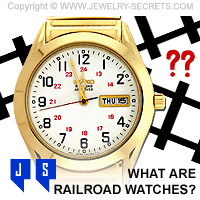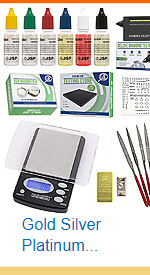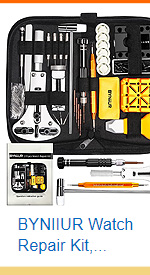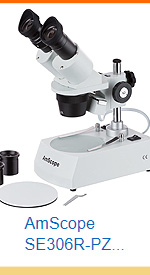WHAT ARE RAILROAD WATCHES?
THE MODERN RAILROAD WATCH - TIME PIECE TIME KEEPER POCKET WATCH
This post contains affiliate links. If you use these links to buy something I may earn a commission. Thanks! As an Amazon Associate I also earn from qualifying purchases.

My, how times have changed.
The railroads were once ruled by conductors with beautiful pocket watches, time pieces that kept the passengers heading towards a new destination.
These time pieces were called railroad watches, or more accurately…
Railroad Approved Watches
Take a look at the watches from Amazon (great deals here) to see what I mean: railroad watches.
Well, over the last hundred years, the railroad watch has been on a great destination of its own… A brand new modern era.
They kept you on time
You see, at one time, pocket watches or wrist watches (most were pocket watches back then) were used to keep the trains on time. They were used for years and years with pretty good accuracy.
There were no real set standards to begin with, but the railroads did try to make an effort to ensure that the conductors had a reliable time piece. It was not easy because a lot of watches were grandfathered into the system.
If they’d been using it for 20 years, they weren’t about to stop now. But the railroads did the best they could under the circumstances and tried to roll with advancements as they happened.
Rapid Pace Increased Risk
As traveling and trains increased at a rapid pace, so did the risks involved. In 1891 their luck ran out. In 1891 a train crash in Kipton, Ohio changed things forever. Two trains collided killing 11 people. That was a fatal moment in history, a turning point that ignited the watch industry and set the high standards that we still use today.
The crash of 1891 was the result of a 4 minute error
4 minutes difference was the small window in time that took 11 people’s lives. Something had to be done, a change was needed. A commission was immediately established to make that change. Their goal was to set the guidelines and time standards across the trains and tracks. Little did they know, these standards would run for almost 100 years.
Standards were set
Once the standards were laid out, all the big watch companies set them in motion. Watch companies like: Illinois Watch Co. Elgin Watch Co. Hamilton Watch Co. Waltham (Ball) Watch Co. and Hampden Watch Co.
So what was the goal of the train commission?
The railroad standards were crucial for safety.
Everyone involved had no choice but to embrace it. It resulted in producing highly accurate time pieces.
The whole goal was to keep 2 trains off the same length of track at any given moment.
Crashes had to be avoided
The public had to be assured that train transportation was safe. The standards would make sure of that.
The 1891 Watch Standard Requirements were:
- American made
- 16 0r 18 size (Lancashire gauge for measuring watches)
- 17 Jewel movement or more
- Temperature compensated
- Adjusted to 5 positions (face up & down, crown up & down, sideways)
- Lever set (safety device)
- +/- 30 Seconds accuracy a week
- Must be fitted with:
- Double rollers
- Patented regulator
- Steel escape wheel
- Plain white dial (or silver)
- Black Arabic numbers
- Each minute delineated (outlined around face)
- Open face
- Winding stem at 12:00 o’clock position
These watch standards looked at life on the railroad and all that it had to account for. Things like: dust and ashes from coal and debris. Getting bumped, jolted and moved around. Getting dropped and turned upside down.
Being subjected to extreme heat and freezing temperatures. The watch had to handle all sorts of trauma, and through it all, more than anything, it had to be accurate.
People’s lives depended on it.
So what was so surprising about the standards?
The railroad watch had to take a beating.
It couldn’t slow down or speed up and the hands could not be rotated by accident. Those were some pretty heavy requirements… And surprisingly, watch makers accomplished that task.
The commission set the rules, the watch companies made the golden pocket watches.
It was a Work of Art
Such perfect watches resulted. Such details. These watches were crisp and clean and elegant. They had easy to read faces called the “Montgomery face“. The Montgomery was the name given for: white dials, black numerals and minutes numbered around the dial. The Montgomery is still one of the best looking faces ever made.
They used rubies in the movement of these watches (17 jewel) because the jewels were harder than steel. Corundum (ruby) is the second hardest gemstone underneath the diamond. Precious gems like rubies wouldn’t wear down with mechanical wear and tear or continuous friction. They kept the working movements and ticking perfectly in sync.
The Lever Set was a Safety Latch
This latch kept the hands from being accidentally bumped or moved. To set the time, you actually had to open the case, push the lever, and set the hands.
Everyone who worked with the railroad service had to have a certified railroad approved watch. All the employees, from conductors to train men, engineers, yard men, foreman, signal men, telephone operators & train maintainers had to comply.
Certified Watches
The employees had to submit their watches for examination and receive a certificate at the beginning of each and every trip. The railroad commission meant business. When you’re dealing in minutes, every little second counts.
The train signal would blow at the top of every hour on the hour. Every employee would check their watch for accuracy and set their time to the “mark“. It was like a fine tuned machine.
Those were the great days of steam locomotives and riding on the great endless railways.
So when did Railroad Approved Watches bite the dust?
Over the years, slight adjustments to the official watch standards were updated as new technology came out. Little by little, that wonderful period of time faded away…
And so was the life of the pocket watch
The end of an Era
Certified railroad approved watches finally ran their ground around 1978. This was because of one major change in the watch industry:
The Birth of the Quartz Movement
When watches were made that ran on batteries, it changed the railroad certified watch forever. Quartz movements proved to be highly accurate, and it was time to finally change the standards away from expensive jewel movements…
And boy did they change
The Ball Official Railroad Standards from the book of rules in 1978 said that “Train employees must have a reliable railroad grade pocket watch or wrist watch. +/- 30 seconds in any 24 hour period.” And that was it.
Now that’s a huge change. Railroads no longer needed to certify watches because trains weren’t being run by time pieces anymore. Things like atomic clocks, 2-way radios, satellites and GPS totally derailed the railroad watch.
Trains were now being tracked with minute precision by highly advanced computers and technology. Sadly, the time mechanisms of 1891 were no longer needed. Those beautiful time keepers and railroad watches were now tucked away in your Grandfather’s jewelry box. What a find that was!
It truly is sad to think about
Because that century brought us some of the best time pieces ever made. Just ask any avid watch collector out there. Railroad watches are highly sought after and greatly prized. Railroad watches in mint condition can turn quite a pretty penny.
So why are Railroad Watches still approved by the railroad?
Railroads today, for some odd reason, still list watch companies and dealers that sell watches approved and certified for the railroad.
They are:
- Seiko quartz – Railroad Approved
- Ball – Official Railroad Standard
- Ball – Automatic Trainmaster
- Bulova – Accutron Railroad Approved
- Elgin – B.W. Raymond
- Hamilton Electric – Railroad Special
- Wyler – Railroad Approved
Railroad Approved Vendor Watches
Why railroads still want railroad employees to buy railroad approved vendor watches is beyond me. I guess they want the train men to have a good, reliable, accurate backup just in case the satellites or GPS goes down? Or maybe it’s just nostalgia? Who knows?
The Seiko Approved Railroad Watch in the picture has these great features:
- Shock Proof
- Dust Resistant
- 3 Year Warranty
- Luminous Hands & Glow Markers
- Day & Date
- Quartz Movement
- Stainless Steel Case & Back
- Easy To Read
- White Dial
- Analog
- Minute Markers
- Second Hand
- Black Arabic Numerals
- Military Time
- 5 Year Battery
- Classic Look
- Accurate Time Keeping
- Water Resistant
- Hardlex Crystal
- Railroad Approved!
Modern Railroad Watches
See, Today’s Railroad Watch has set new standards in functions, details and accuracy. But the funny thing about all of this is…
Trains still don’t run on time
Nothing will ever measure up to the accuracy of those great pocket watch legends of the past. Those watches were made with a love and a passion for the railway and the adventure of a lifetime.
Thinking back, who wouldn’t want to see the billowing smoke trails, hear the massive wheels chugging, and feel the engines come to life? I know I’d love to. Give me the good old days, a railroad pocket watch, and I’ll be the first to say “All Aboard!”
Check out some great Railroad Watches here.
Cheers! :)


















“5-year battery” – on the solar seiko watch in question does that mean that the solar battery has a lifespan of 5 years before necessary replacement ?
Hi Robert. Yes, that is correct. It will last 5 years before a replacement, where a normal battery generally lasts between 1-3 years depending on the brand, amount of features, music, lights, date… etc.
IT IS A SAD DAY IN HELL TO READ THIS, ABOUT A RAILROAD WATCH. I WAS A CONDUCTOR & ENGINE FORMEN ON THE SANTA FE RR. FOR 8 YEARS IN THE 70’S WHAT IS A PASSENGER TRAIN? AND OH YEA WHAT IS A CABOOSE?
That’s a great article on the railroad watch, and how it came to be! And of course how and why it’s nothing like they used to be.
The “old days” are usually held in esteem by many who never experienced them, since the negative issues tend to fade away with old memories, but the enjoyable parts seem to be magnified by the passing of time.
The old days of the steam locomotive seem to leave out the negative aspects of the billowing of coal smoke as it left the smokestack, and covered the city and/or the countryside with black clouds that covered homes, buildings, freshly washed laundry on the lines of uncounted housewives, and the lungs of those who had to breathe it. Yes, it’s an old time memory, but one many would wish to forget.
As for the watches, they show the increasing technology available to the people who depended on them to keep people safe, and trains on time. As much as possible, when dealing with delays caused by numerous factors out of the control of those men who relied on them. Wrecks on the tracks, boulders falling off the mountains they ran through, snow avalanches likewise, enormous gatherings of livestock crossing tracks in the middle of nowhere, when they certainly could not be controlled or anticipated. Communications advancements solved many of those problems, along with the highly accurate watches that came along with the advancements of watch technology.
My gift to my new fiancé (not a railroad man, but certainly an admirer,) in November of 1975 was such a high technology watch, a brand new technology of the LED variety. The kind with the dark face that showed up time, day, date, etc., in bright red characters through the press of a button, whenever you needed to know that information. I had the back of the case engraved with the most appropriate phrase I could think of, that just came to me in a flash, early one morning in the shower –
“Yours ’til the end of time. Shari”
I gave it to him on his birthday, which was two weeks after he presented me with my engagement ring. (Our engagement period included a few train journeys together, and alone, on the beginnings of Amtrak in late 1975, which worked out OK, but still left several things to be desired!)
He still has it. It doesn’t work anymore, but then I haven’t had it looked at lately to see if whatever it needs can still be found! But, of course the message on the back is still there, and to me that’s the most important thing. Forty-seven years later, we’re still joined at the hip, as we should be!
Speaking about the black clouds and lungs reminds me of when I was 7, in school, and learned the longest word in the English dictionary (at that time). It was: Pneumonoultramicroscopicsilicovolcanoconiosis… Or in other words; miner’s lung disease. Nasty stuff.
I love the fact that your birthday present watch may not work anymore, but the memories and sentimental message will live on forever. :) -Richard